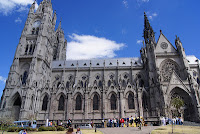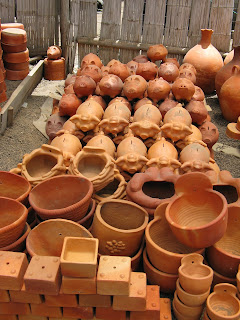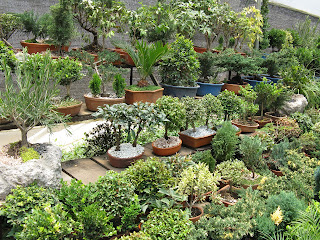 Old Quito was founded in 1536 on the ruins of an Inca town and is therefore not, in the sense of time in Ecuador and South America, an old city. Indians ( a loaded term for aboriginal people) have been living here for many thousands of years and the Incas had build a city at the site where Quito is today. The Incas created an empire that stretched a big part along the Andes, and even though they were only in power over a fairly short time, they had a huge influence on the people in the Andes and on the landscapes through impressive infrastructure projects.
Old Quito was founded in 1536 on the ruins of an Inca town and is therefore not, in the sense of time in Ecuador and South America, an old city. Indians ( a loaded term for aboriginal people) have been living here for many thousands of years and the Incas had build a city at the site where Quito is today. The Incas created an empire that stretched a big part along the Andes, and even though they were only in power over a fairly short time, they had a huge influence on the people in the Andes and on the landscapes through impressive infrastructure projects.
 Societies existed in South America with sophisticated infrastructures and human interaction even before the establishment of the previously believed four pillars of human civilisation in the Nile delta, in the Tigris-Euphrates Valley, the Indus Valley and East Central China. Interestingly this has only begun to be realised and (partially) accepted in this century. Our history books need a serious update.
Societies existed in South America with sophisticated infrastructures and human interaction even before the establishment of the previously believed four pillars of human civilisation in the Nile delta, in the Tigris-Euphrates Valley, the Indus Valley and East Central China. Interestingly this has only begun to be realised and (partially) accepted in this century. Our history books need a serious update.
However, not much is seen or uncovered in Ecuador about this exciting development. Most of these civilisations existed long before the Incas, thousands of years before. But what the colonialist especially from Spain found in these part was the empire of the Incas, a relative new civilisation, which at it highest might have stretched from somewhere in Peru up to about the site of Quito.
The Incas were overrun by a few hundred Spaniards who were thought to be Godlike creatures on their horses and in armor with guns and canons. However, illnesses brought to the "new world" in the western hemisphere killed millions of people, sometimes even before they actually met the "white man" in person, and that is likely why the civilisations fell so easily to the conquistadores.
When the Spaniards arrived to what is now Quito in the 1534, the old palaces and temples of the Incas had been destroyed and nothing was left, the Incas had fled to the mountains. Today the old historical Quito is a mixture of old churches and colonial buildings and structures, and more modern structures. The socalled 'Baroque school of Quito', which is a fusion of Spanish, Italian, Moorish, Flemish and indigenous art is seen in some of the churches and monastries and is the direct reason that Quito has been declared a Unesco Heritage site.
 |
| The presidents office |

Churches are ever present



And then there are the beautiful houses, the narrow streets, the shops, the people. The seemingly endless possibility of just wandering around, take it all in and get this strange "historic feeling" one gets when being somewhere where life has been lived for hundreds and hundreds of years.
 A mansion
A mansion
Colorfull that it is

Mariscal Antonio José de Sucre, a hero of Ecuadorian independence.
 Somehow its always uphill
Somehow its always uphill  a lot of "hole in the wall" stores around
a lot of "hole in the wall" stores around shoes anyone??
shoes anyone??
 Marcus square in Venice?
Marcus square in Venice?
Flag seller and family
 or maybe shoelaces?
or maybe shoelaces?
beautiful artstores
Interesting restaurant settings. Name of restaurant is Mea Culpa, located in a former Archbishop's residence.
and finally a fact: the original Panama hat comes from and is still largely made in Ecuador.
Unfortunately they are made for midgetheads, havn't found one that fit me yet. Still looking









































 there they were LLamas you did not have to pay to photograph, next on the agenda Condors in flight not in a cage
there they were LLamas you did not have to pay to photograph, next on the agenda Condors in flight not in a cage




